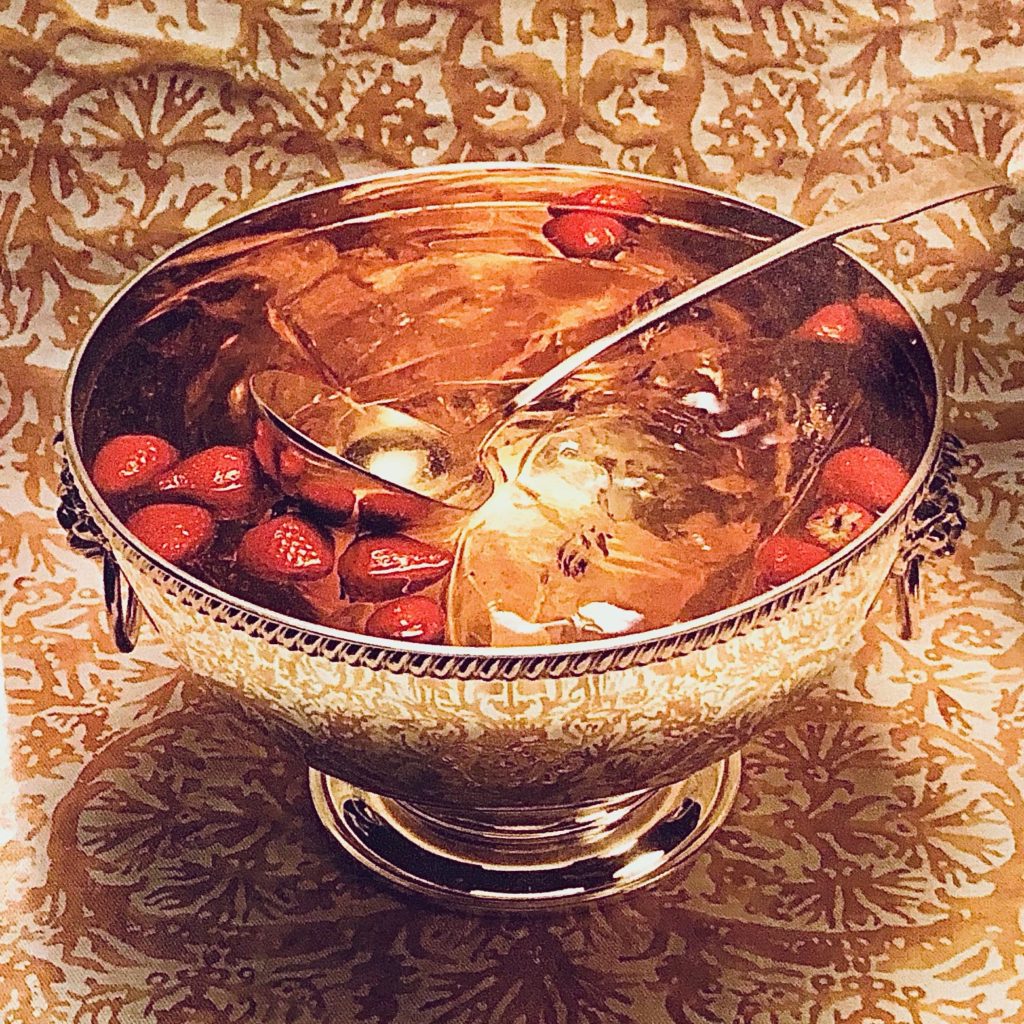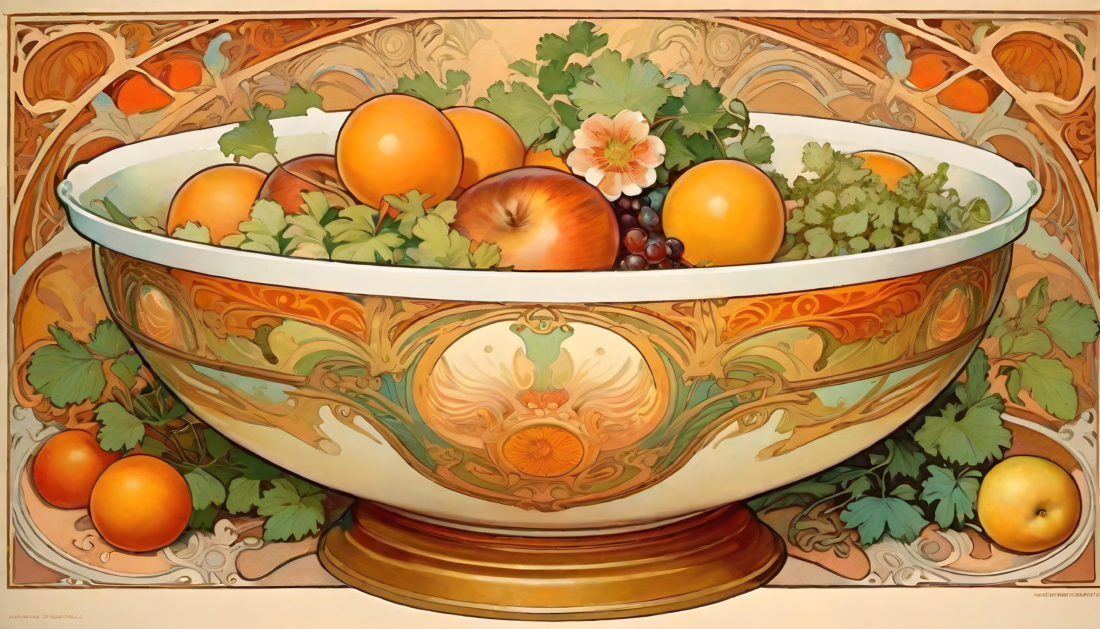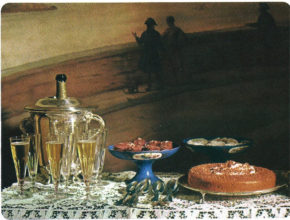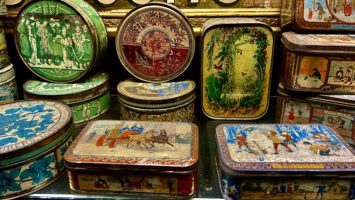Oh, the lonely sad punchbowl. You see them on the bottom shelf at the goodwill. So forlorn, so forsaken. Why has this happened? I love punch. OK, in a Covid world, no one is drinking from the same bowl at the moment, but way before 2020, punch seemed to go the way of the dodo.
Maybe it was the connotations of punch and cookies for children, which gave punch the air of being only for the little ones. In the recent decades, punch seemed to become synonymous with non-alcoholic drinks made for birthday parties. Then again, it may also have been our love of choice that caused us to prefer canned and bottled offerings for our guests. Or did we all just drink one too many badly made egg nog, putting us off of punch forever?
I say, let’s bring it back! Firstly, in an eco-friendly world, offering up cans and bottles isn’t exactly the most aware way to serve drinks and secondly, punch isn’t just for kids! Alcoholic punches are fantastic when made well, and to make punch well, all you need is a good recipe. Indeed, there is a punch bar in San Francisco that has taken punch to mixologists heights and gives me a bellyful of delight whenever I’m in the Bay.
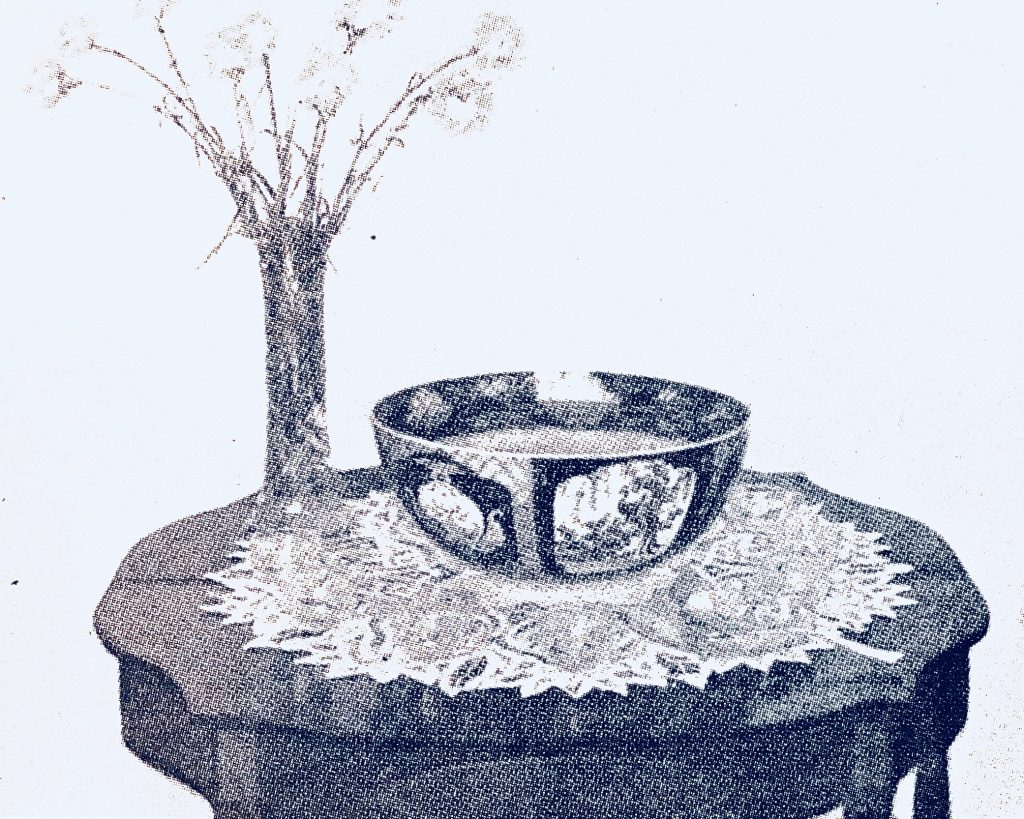
It may be an apocryphal story, but punch is rumored to have began when the sailors on East India Company ships traveling to exotic lands found themselves running out of drinkable beer and so turned to local rum and gin, diluting it with citrus juice to ward off scurvy and flavoring it with spices to keep it from going bad in the heat of southern climes. Alternate explanations say the British soldiers were trying to make a drink closer to wine by diluting cheap spirits found on their travels.
As with nearly every origin story I’ve relayed on this blog, I have serious questions about the validity of these events. Ancient societies such as the Egyptians made concoctions very much like proto-punches in their social and religious ceremonies. Certainly, many of the nations colonized by the East India Company and others had drinks that resemble punch long before the arrival of German, Dutch and British merchants. In 1638 a German manager in India noted that his factory workers drank a drink of, “Aqua Vitea, rose-water, juice of citrons and sugar”, which implies that the Indian workers already had a form of punch they were used to drinking at the same time the Brits were said to be inventing it. Just keep in mind that most of the early historians who lay claim to the making of punch for the west are in fact western, and so may have an underlying bias.
Indeed, the word punch is said to derive from the Hindi word panj, which means five. It is thought to refer to the five original ingredients in punch. Sugar/honey, water/tea/milk, alcohol, citrus, spices. Again, parts of this explanation are probably a load of hooey.
“But wherever it originated, punch had become a common sailor’ drink before the close of the sixteenth century. In 1599 it was served for the first time on record, typically at a festive event, and on a scale never to be matched. Sir Edward Kennel, commander-in-chief of the English navy, offered his ships’ companies a prodigious punch made from eighty casks of brandy, nine of water, eighty pints of lemon juice, twenty-five thousand limes, thirteen hundred pounds of Lisbon sugar, five pounds of nutmeg, three hundred biscuits, and a cask of Malaga. it was brewed in a vast marble basin and served to six thousand guests by ship’s boys sailing the punch in a rosewood boat in fifteen-minute shifts to keep from getting drunk on the fumes.”
Gourmet Magazine, June 1969
What we can assume to be fact, is that sailors brought a taste for rum and the concept of alcoholic punch back to the British isles. In the early 1600s, it remained a drink for sailors, but by the middle 1600s, it was making its way into pubs. This soon turned it into the drink of choice for gatherings. By the late 17th century, every household save the poorest would have had some sort of punchbowl, (even if it was only a repurposed mixing bowl). As the 17th century became the 18th, sea trade cheapened the cost of porcelain and ceramics, leading the wealthy to opt for silver punchbowls or bowls made of rare and expensive materials. Soon the punchbowl one owned became a status symbol, letting everyone know your place in the class system.
Gourmet Magazine continues that:
“The host usually “brewed” the punch at his table or sideboard and dispensed it ceremoniously with a ladle. If brewed beforehand, it was borne in to the board by a footman.”
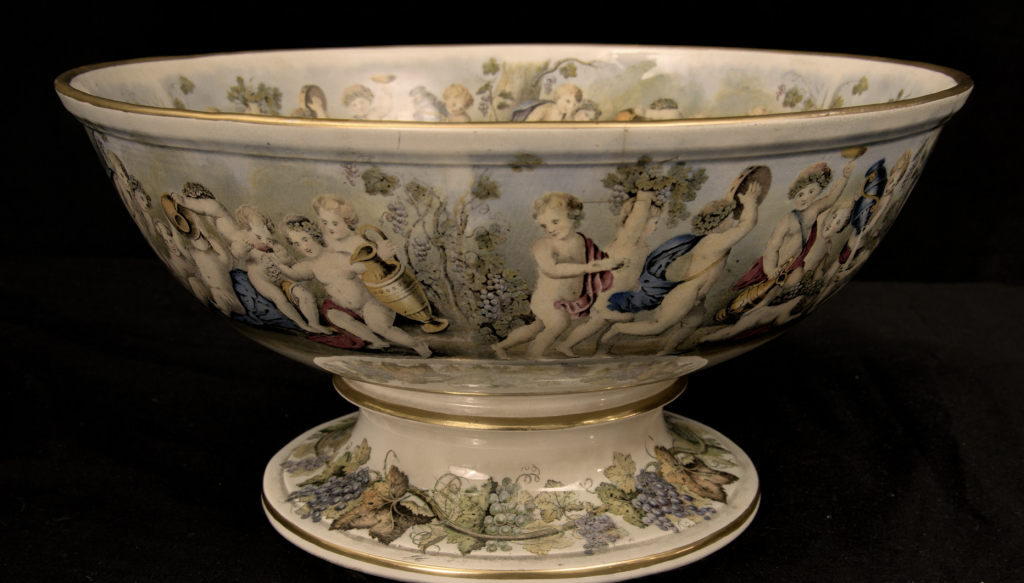
While non-alcoholic punches were developed for children and teetotaling ladies in the late 18th century; from the 17th century to the 19th, alcoholic punch reigned supreme. Alas, as with all good and fun things, the late Victorian’s had conflicted feelings about the merriment spiked punch offered. As gin became the drink that was associated with the lower classes, drunkenness and licentiousness, Queen Victoria asserted that strong alcohol should be forsaken and so, alcoholic punches began to fall out of favor. This is not to say they were no longer drunk, one has only to read A Christmas Carol or any other Dickens story to hear the names of fine alcoholic punches. In fact, one of the eras most famous brandy punches is called Victoria Punch.
In the 18th century, innovations in glass manufacture meant that glass punchbowls appeared and became all the rage. They were especially beloved for fruit punches and punches served in the summertime as they allowed one to show off the delightful colors of ones punch.
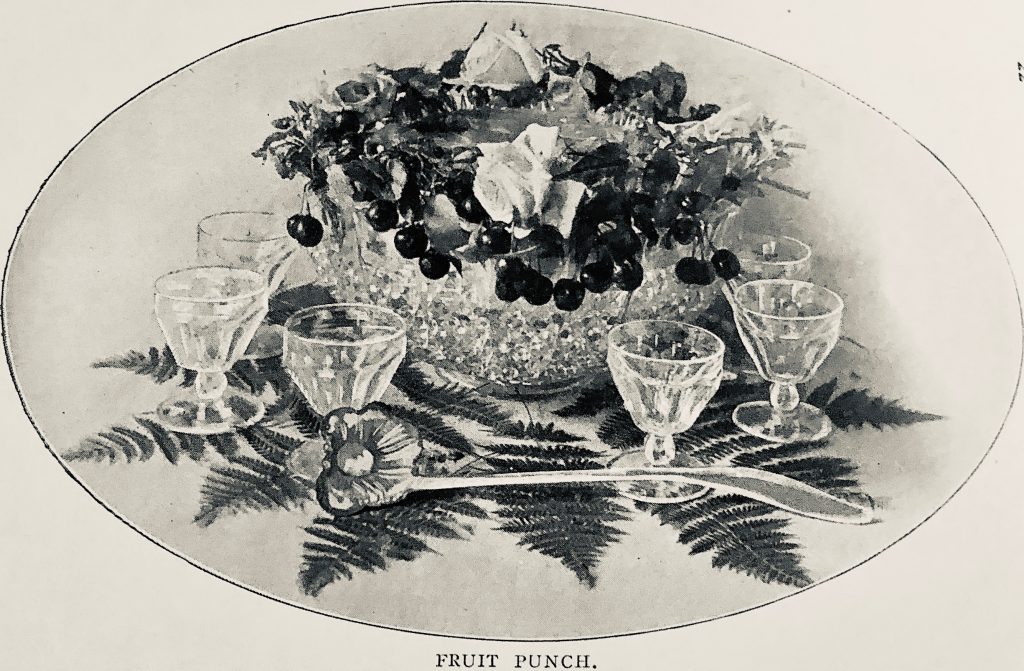
One of the best cook books on the subject of Punch is Drinking with Dickens by Cedric Dickens, the great-grandson of Charles Dickens. The recipes are astoundingly good and based on family favorites that go back to Victorian times.
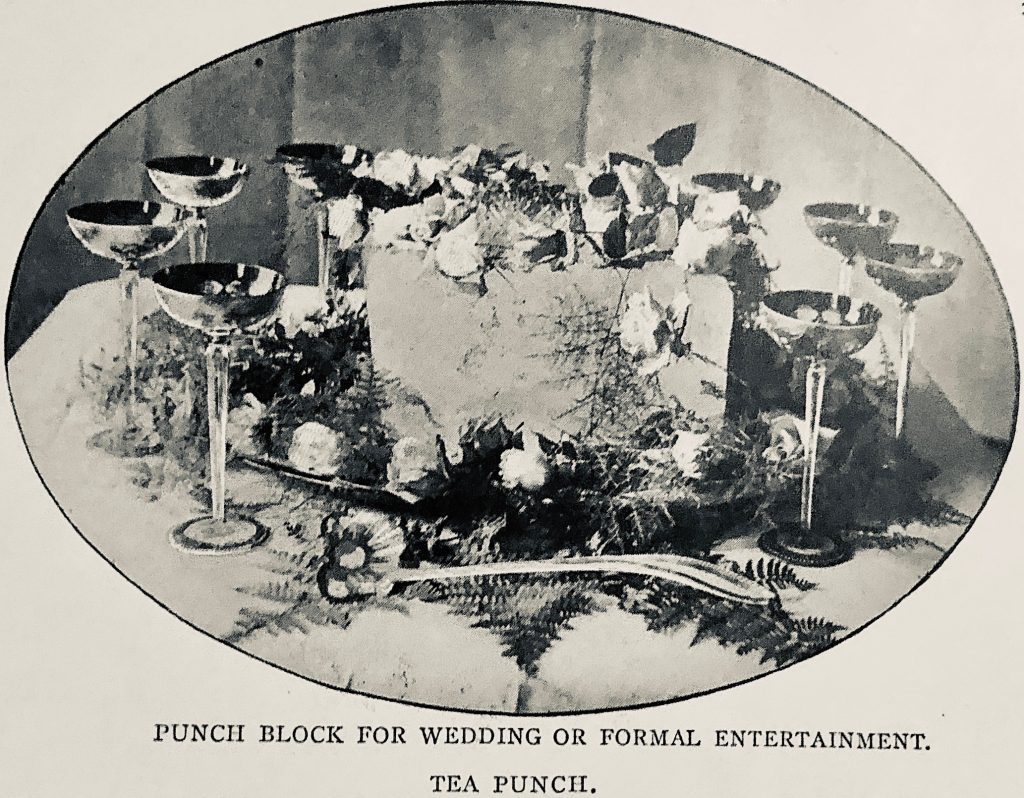
At the turn of the century, as the accessibility of ice improved and bartenders raised the standards of cocktails, punch was served less and drinks served singly was normalized. This didn’t happen overnight. Punch bowls were still brought out for holidays and families usually had at least two. In the 20’s to the 40’s Tom and Jerry bowls were still ubiquitous, Silver plate punchbowls were the norm in the 50’s and 60’s for eggnog. And cocktail punchbowls from George Briard and Dorothy Thorpe seemed to grace every mid-century home.
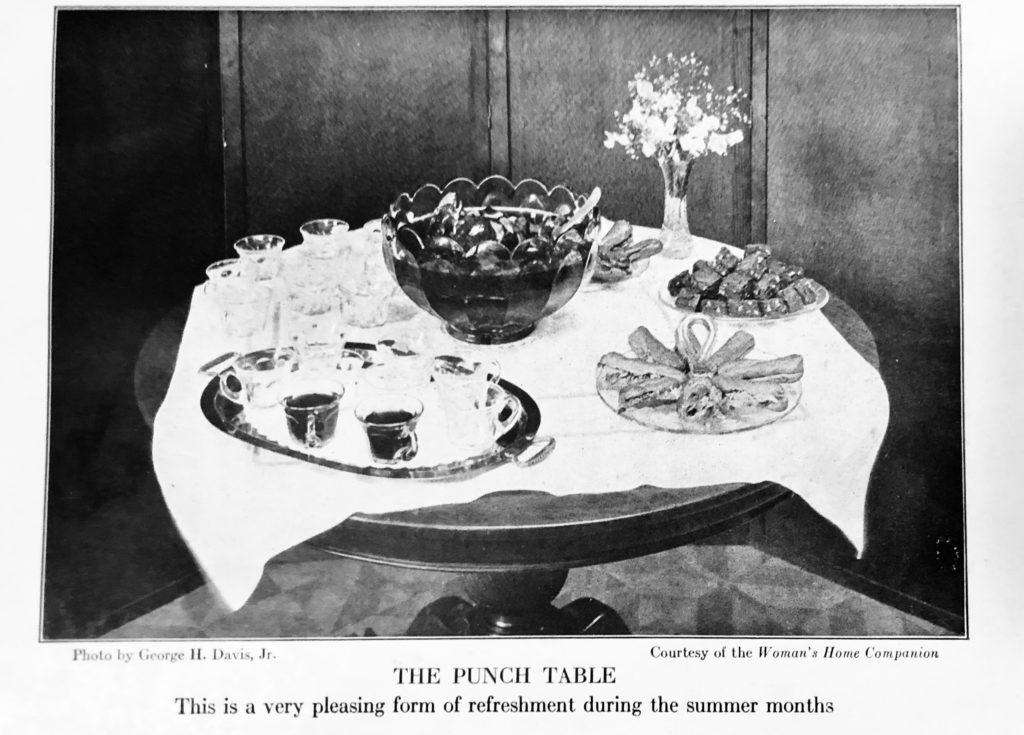
The home punch table is incredibly simple to set up. The table consists mainly of the punch bowl with a ladle, cups with or without saucers, a nibble, (usually sandwiches and desserts can can be eaten with the fingers) and some sort of decoration, such as flowers. The more elaborate the event, the more elaborate the table. Punch tables at balls could be over six feet long. I’ll get more into the setting of the table in a later post.
There are so many wonderful punch bowls out there. Obviously, giant Sterling Silver bowls are rare and expensive. There are many fine silver-plate punchbowls available, just avoid the thin versions that one starts to see at the end of the mid-century, as they are worth little to nothing. With silver-plate you want heft and age.
Porcelain bowls will usually have a stand or underplate. If those are missing, avoid paying top dollar unless the bowl is in pristine condition and very, very old. Limoges punch bowls with under-plates are particularly lovely and will cost in the mid-to upper hundreds. The most stunning examples that have both their original under-plate and cups can cost over a thousand dollars.
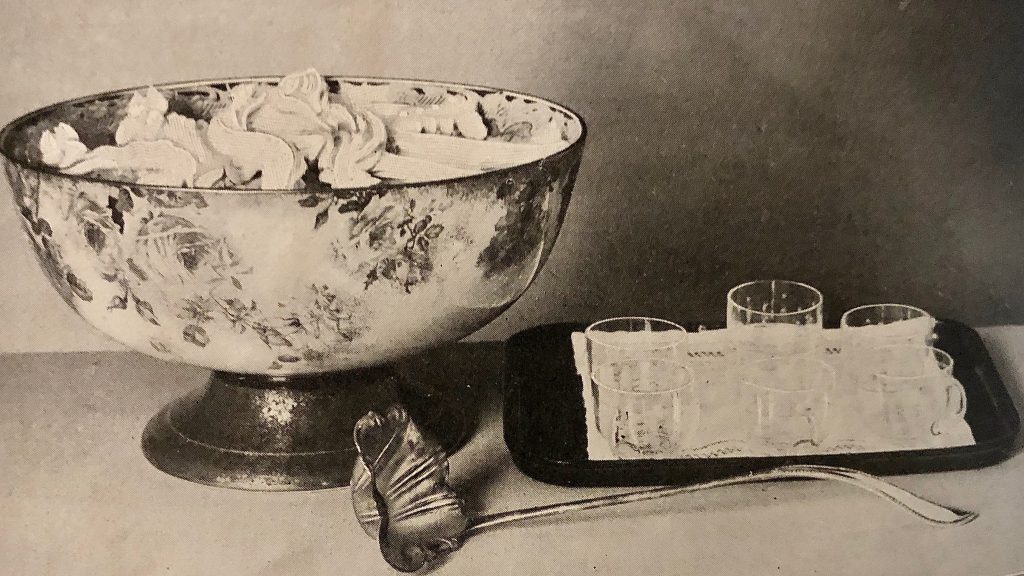
Antique Chinese import punch bowls are extremely desirable, but because of this there are many fakes out there, so be wary. You are best advised to thoroughly learn about these before investing in one. I dream of owning one of these someday.
German and Prussian punch bowls often have lids. They are lovely and practical, though not nearly as sought after. Lidded punch bowls are very useful for hot punches. German, Prussian and Eastern European punch bowls are usually less expensive than the French, but this does not make them less beautiful and you can find many stunning examples out there.
Early American and Depression Glass punch bowls are gorgeous and really undervalued right now. I see carnival glass versions at thrift stores often. The amber and purple versions make wonderful Halloween party decor. If mid-century is your jam, try one of those beautiful Briard or Thorpe bowls with cups that match. Just make sure any silver decoration is opaque and intact – and never buy a cup or bowl that has tape over the silver, it will peel off chunks no matter how careful you are. Milk glass bowls are practically given away today, though they make lovely wedding/baby shower decor. A pretty milk glass bowl with a rose sangria or sherbet punch is gorgeous to look at. Even better, freeze an ice ring with edible flowers in it, to float on top – it looks divine.
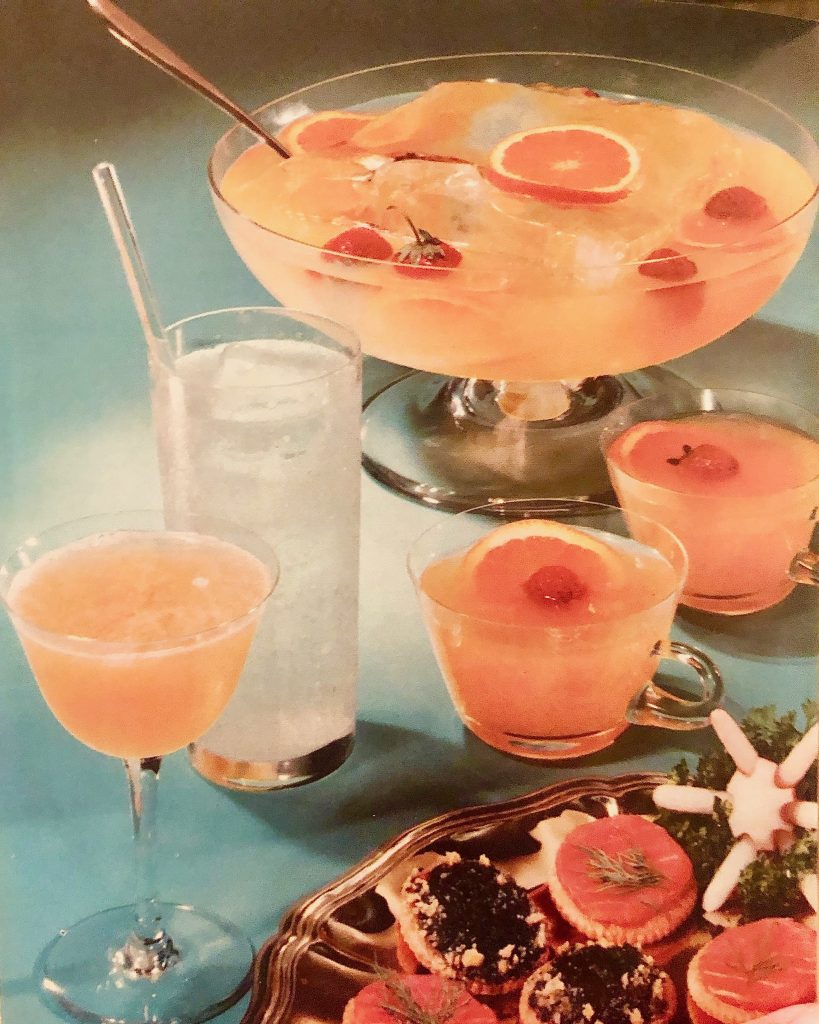
Now, if I just can’t convert you to drinking punch, may I please say that punchbowls are fantastic for filling with ice to keep your white wine and champagne cold.
Quick tip: If you have a gorgeous old porcelain punch bowl, eschew the stunning sterling silver or porcelain punch ladle and use a plastic ladle, (you can get these at any smart n’ final or restaurant supply). Anything heavier than plastic will soon damage your bowl.
I hope I’ve turned you around on punch. My family were avid punch drivers and I’ll collect a few vintage punch recipes and post them later.
Here’s to the days when we can meet around the punch bowl once more!
Much Love, Cheri
